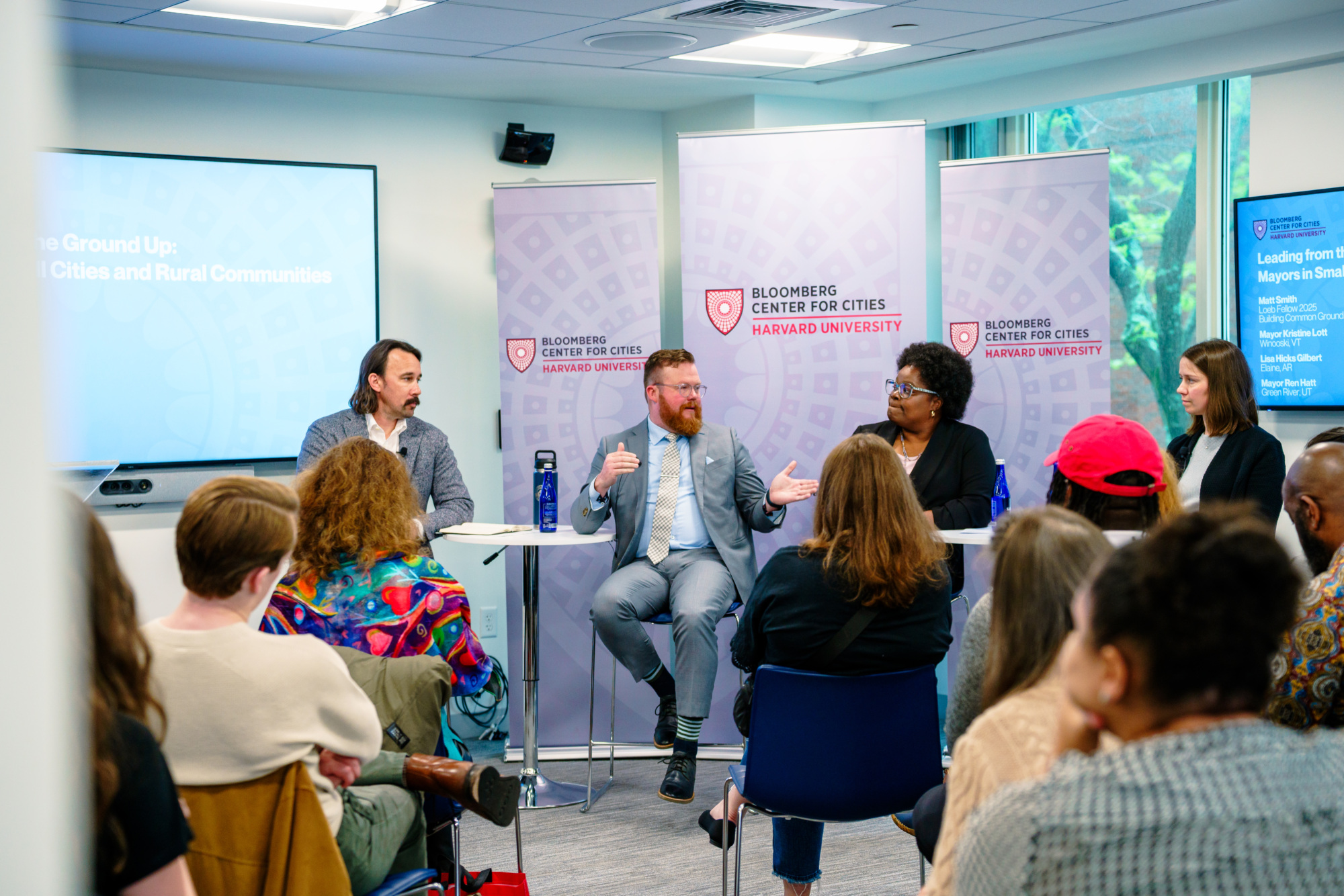Cambridge, Massachusetts (June 2, 2025)—In a nation of small towns, what does it take for rural communities in the U.S. to thrive despite shrinking budgets and deepening political divides? Three mayors—Ren Hatt of Green River, Utah; Lisa Hicks Gilbert of Elaine, Arkansas; and Kristine Lott of Winooski, Vermont—shared their experiences and insights in a conversation hosted by the Bloomberg Center for Cities at Harvard University.
Moderated by Matthew Smith, a Loeb Fellow at the Harvard Graduate School of Design and co-founder of the rural-focused organization Building Common Ground, the event drew students and faculty from across disciplines. Panelists explored how the unique challenges facing smaller and rural communities are being met with innovation, often out of necessity.
Mayors Wearing Multiple Hats
Mayor Hatt described that he is Green River’s grant writer in addition to being a full-time high school teacher, lawyer, and the mayor. As federal funding has decreased, he has turned to nonprofits, potential grants, and public-private partnerships to continue advancing the city’s economic development goals.
“We’re constantly adapting,” he said. “The great thing about small towns is that we never have enough money, so we innovate—public-private partnerships and nonprofit collaborations, like the one we have with the organization Epicenter, are some tools in our toolkit.”
Building Community Connections
In tiny Elaine—where the population has shrunk to 600, and there is no grocery store or school, yet the town sits on some of America’s richest farmland—Mayor Hicks Gilbert juggles roles from city clerk to custodial staff. She emphasized the importance of public service and direct engagement to chip away at a historical divide based on race that is still present in the community.
“My focus continues to be on connecting this community more,” she said. “Everyone has my cell number; everyone knows where I live—if we’re going to move forward, we have to find things in common. The people in my community are my greatest asset.”
Representing Everyone
Mayor Lott spoke about the challenges of planning amidst shifting resources and her duty to represent everyone in Winooski’s refugee resettlement community, the most diverse place in Vermont.
“I owe it to my residents to listen to them,” she said. “If you’re trying to make progress and bring people along with you, everyone deserves to be heard. I stay focused on the problem we’re trying to solve and then we can negotiate the right way to do it.”
All three mayors demonstrated that thriving in small towns hinges on adaptability, deep community engagement, and creative approaches to mitigate shrinking resources. Their stories show that leadership is often a balancing act—taking on many roles, seeking partnerships, and cultivating communication and connection with all residents.
Connecting Research and Practice
Smith highlighted the importance of supporting the leadership of small towns in the United States, noting that 66 million Americans live in rural spaces.
“Due to the structure of the federal government, rural places are especially powerful,” Smith said. “But they often feel misunderstood or ignored. I’m interested in what we can all learn from civics, public service, and social innovation in small towns as well as how we can bridge the so-called urban/rural divide in the process.”
Smith added that designers are trained to develop creative solutions to complex problems. Students and graduates of the Harvard Graduate School of Design’s architecture, landscape architecture, and planning programs have a lot to offer to, and learn from, small communities. The first step is showing up and listening.
As cities across the country navigate fiscal pressures and political polarization, the experiences these mayors shared reinforce the idea that cities of all sizes and leaders across varying circumstances can benefit from inclusive problem-solving and a steadfast belief in their community’s potential.



